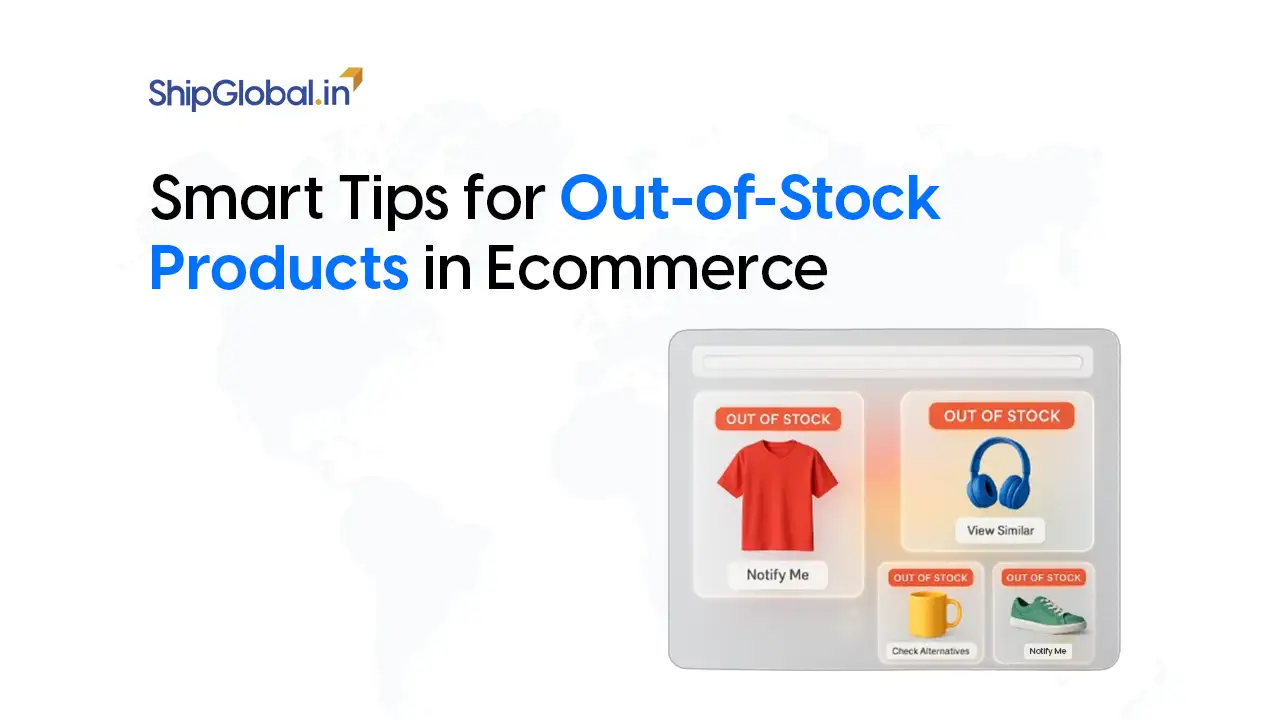Imagine placing an order online and receiving it in record time, perfectly packaged, without a hitch. Sounds like a dream, right? Behind that seamless experience is an efficient distribution network, working tirelessly to make everything seamless.
For eCommerce brands, getting products to customers quickly and reliably is a necessity. In this fast-paced industry, your distribution network can make or break your success. Ready to craft a system that delivers speed, savings, and smiles? Let’s dive into some practical and engaging tips to build a distribution network that can help your eCommerce brand to reach new heights.
What is a Distribution Network
A distribution network is the system used to store, manage, and deliver goods from manufacturers to end customers. This interconnected group of storage facilities enable the storage and management of goods, followed by their secure delivery to customers via an efficient transportation system.
Think of a distribution network as your product’s journey from your warehouse to your customer’s doorstep. The system thus involves everything from warehousing and transportation to inventory management and order fulfillment.
Efficient Distribution Networks: A Game-Changer for eCommerce
Before learning about the tips to create an efficient distribution network, you must know why it is important in the first place.
Building a strong distribution network is more than just logistics—it’s about creating a system that works like clockwork, ensuring your customers get what they want, when they want it. A well-crafted distribution network can elevate your brand’s reputation, keep customers happy, and cut down on unnecessary costs.
We will break it down for you why an efficient distribution network matters?
- Happy Customers: Delivering fast and on time builds trust and loyalty among customers.
- More Savings: Streamlined operations help cut costs and boost profits.
- Scalability: A good network can scale up effortlessly as your business expands. Handle growth without disruptions!
- Competitive Edge: Reliable and fast shipping can set your brand apart from competitors.
An efficient distribution network ensures that products reach customers quickly and cost-effectively, enhancing their experience while keeping operational expenses in check. Let us now look at the steps that you can take to build a strong distribution network—one that guarantees your success.
Choose the Right Warehousing Strategy
Your warehousing strategy is the foundation of your distribution network. Choosing between centralized and decentralized warehousing depends on your business goals.
Centralized Warehousing
- What It Is: You store all inventory at a single place or in a few large hubs.
- Why It’s Great:
- Easier to manage stock in one place.
- Lower costs due to economies of scale.
- Central control over inventory.
- When to Use It: Ideal for businesses with a smaller geographic reach or high-value, low-volume items.
Decentralized Warehousing
- What It Is: Inventory is spread across multiple warehouses near customer hubs.
- Why It’s Great:
- Faster deliveries because goods are closer to customers.
- Lower transportation costs for regional shipments.
- Better risk management—if one warehouse is affected, others can step in.
- When to Use It: Perfect for large businesses shipping high-volume goods.
Pro Tip: Combine both approaches! Use centralized warehouses for bulk storage and decentralized ones for quicker regional deliveries. This hybrid strategy can give you the best of both worlds.
Master Inventory Management
Ever run out of a best-seller during peak shopping season or find yourself with piles of unsold stock? Proper inventory management ensures you strike the right balance every time.
Here’s how to stay on top of your inventory game:
- Forecast Demand: Use tools to predict future sales based on past data, trends, and seasons.
- Just-In-Time (JIT): Order stock only when needed to minimize waste and storage costs.
- ABC Analysis: Focus more on high-demand items (A-category) and less on slow-moving stock (C-category).

Keep your inventory visible to your team in real time with smart software. This avoids surprises and ensures your network runs smoothly.
Embrace Technology
Let’s face it—without technology, managing a distribution network is like navigating a maze. From order tracking to warehouse automation, tech can transform your operations.
Here are the must have tools:
- Warehouse Management Systems (WMS): Optimize storage, picking, and packing like a pro. Automating repetitive tasks frees up time and ensures fewer mistakes—so your team can focus on growing the business.
- Transportation Management Systems (TMS): Plan delivery routes for faster and cheaper shipments.
- Order Management Systems (OMS): Sync orders across platforms to streamline fulfillment.
- Real-Time Tracking: Give customers peace of mind with live updates on their orders.
Streamline Transportation and Delivery
Transportation is often the most expensive part of an online distribution network. Here’s how to streamline ecommerce logistics:
- Strategic Warehouse Locations: Place warehouses near major cities or customer clusters to reduce delivery times.
- Zone Skipping: Bypass unnecessary stops by consolidating shipments for faster delivery.
Online Distribution and Digital Supply Chains: Key Terms
- Online Distribution: Enables businesses to sell products directly to consumers through digital platforms, bypassing traditional retail channels.
- Digital Distribution: Involves delivering products or services via the internet, reducing the need for physical inventory and enhancing delivery speed.
- E-Commerce Network: Connects buyers and sellers globally, offering a seamless transaction environment through online marketplaces and stores.
- Internet-Based Distribution: Allows businesses to manage and track sales, inventory, and customer interactions entirely online.
- Virtual Supply Chain: Integrates digital tools and real-time data to streamline operations, from procurement to delivery.
- Multichannel Distribution: Utilizes multiple sales platforms—such as websites, mobile apps, and third-party marketplaces, to increase reach.
- Omnichannel Distribution: Ensures a consistent and integrated customer experience across all online and offline channels.
- Platform-Based Distribution: Uses centralized platforms like Amazon, Shopify, or Flipkart to handle listings, payments, and shipping logistics efficiently.
Build a Smarter Shipping Strategy
The shipping process is where the magic happens or falls apart. Done right, it can turn a one-time buyer into a loyal customer.
Here’s how to ace it:
- Partner with Reliable Carriers: Work with trusted shipping companies like DHL, FedEx, and ShipGlobal. Choose the one that aligns with your standards and business requirements.
- Offer Flexible Shipping Options: Same-day, next-day, or standard shipping—give customers the power to choose.
Pro Tip: People love free shipping! Build it into your pricing strategy to keep buyers happy without sacrificing profits.
Focus on Scalability and Plan for Growth and Peaks
Scaling your ecommerce brand means your distribution network needs to grow with you. The holidays, flash sales, or a viral product can spike demand—are you ready?
Here’s how to prepare:
- Outsource Smartly: Partner with third-party logistics (3PL) providers during peak seasons to handle extra demand.
- Monitor KPIs: Keep an eye on key metrics like delivery time, shipping costs, and order accuracy to identify bottlenecks.
- Stay Agile: Be ready to expand your network or tweak operations as your business evolves.
Prioritise Sustainability
In today’s eco conscious world, sustainability is not just good for the planet—it is great for your brand also. A green distribution network can win customers and save costs.
Here’s how to make your logistics greener:
- Eco-Friendly Packaging: Use recyclable or biodegradable materials to reduce waste.
- Route Optimization: Save fuel and cut emissions by planning smarter delivery routes.
- Electric Vehicles (EVs): Consider adding EVs to your fleet for clean, efficient transport.
- Consolidate Shipments: Combine multiple orders into a single trip to reduce the number of deliveries.

Share your sustainability efforts with customers. It’s a win-win for the planet and your brand image!
Enhance the Customer Experience
Thinking of how to advertise your brand?
There cannot be any better advertisement strategy than prioritising your customers and keeping them satisfied. At the heart of any successful online eCommerce distribution network is a happy customer. Keep them engaged and informed to build trust and loyalty.
Here’s how:
- Seamless Returns: Make returns hassle-free with prepaid labels and clear instructions.
- Communicate Clearly: Send notifications about delays, offers, or new shipping options. Provide tracking links so customers always know where their orders are.
- Meet Expectations: Ensure deliveries are accurate and on time to build trust and loyalty.
- Personalized Services: Tailor delivery options based on customer preferences or purchase history.
When your distribution network consistently delivers, customers will not only come back but will bring more people with them.
Conclusion
Building a strong distribution network is essential for any eCommerce brand looking to scale, satisfy customers, and maintain a competitive edge.
Whether you are a small business, just starting out, or refining your existing business strategy, building an efficient distribution network demands strategic planning and a strong understanding of current trends.
In the competitive eCommerce landscape, efficient logistics can be the difference between earning repeat customers and losing them to competitors. How? Because a strong distribution network ensures that products reach customers quickly and cost-effectively, enhancing their experience while keeping operational expenses in check.
Think of your distribution network as a growing tree—strong roots (warehousing) and flexible branches (delivery channels) make it thrive.
Mastering inventory management, leveraging advanced technologies, and prioritising sustainability can help you create a seamless and effective online distribution network for your ecommerce brand.
Implement these tips by adapting them to your brand’s unique needs and watch your business thrive. Happy Shipping!
FAQs
In a supply chain, a distribution network is the interconnected system that facilitates the storage, management, and delivery of goods from manufacturers to end customers.
Digital tools and solutions like Warehouse Management Systems (WMS) and Transportation Management Systems (TMS) streamline operations, reduce errors, and speed up processes, making your network more efficient.
Adopt green practices like using sustainable packaging, optimising delivery routes, and considering electric vehicles for transportation.
Yes, with a mix of in-house systems, third-party providers, and strategic planning, your network should be able to adapt to the changing demands swiftly.
Strategically locate warehouses near customers, optimize delivery routes, and use zone skipping to cut unnecessary costs.








